Crafting Invincible Environmental Protections, Part 5A
The Never-Ending Battle on the Pesticide Front: DDT
(This post is divided into two radio segments. Listen to the first one here and the second one here.)
The momentum sparked by the first Earth Day in 1970 lit a match under Congress. Americans wanted our environment cleaned up so bad that it took less than three years for the Clean Air, Clean Water, and Endangered Species Acts to each pass by huge bipartisan majorities. The newly empowered Environmental Protection Agency banned just about all domestic use of DDT on December 31, 1972, little more than six months after EPA Administrator William Ruckelshaus issued an order cancelling nearly all remaining Federal registrations of DDT products. Public health, quarantine, and a few minor crop uses were excepted, and manufacturers were still allowed to export DDT to other countries.
The six-month delay between Ruckelshaus’s order and the date it went into effect gave farmers till the end of the growing season to use up what DDT they still had and helped the U.S. Department of Agriculture instruct farmers on safe alternatives.
As early as 1944, FDA pharmacologist Herbert O. Calvery expressed concern over possible hazards associated with DDT, and in 1947, Bradbury Robinson, a physician and nutritionist practicing in St. Louis, Michigan, also warned of DDT’s dangers. The U.S. Department of Agriculture, the federal agency responsible for regulating pesticides before the EPA, had already begun regulatory actions to prohibit many of DDT's uses in the 1950s because of mounting evidence of the pesticide's declining benefits and environmental and toxicological effects. So the use of DDT in the U.S. was already declining before Rachel Carson’s Silent Spring was published in 1962.
Carson focused attention on DDT not because it was the only persistent or dangerous pesticide, but because it had been heavily used since World War II, making many of its harmful effects well known, so it made an excellent case study in what can happen to humans and wildlife when a pesticide is pushed by government and industry into heavy widespread use before its effects are fully understood.
Carson never suggested banning DDT or any other pesticide. She simply made the case that such dangerous chemicals should be used as sparingly as possible and only in situations for which there weren’t effective alternatives, pretty much exactly the way we should have been using antibiotics all along, and for the exact same reason.
Mosquitoes and other rapidly multiplying insect and weed pests quickly grow resistant when pesticides are applied in the environment. DDT was exceptionally effective at eradicating mosquitoes for a year or two, but then the positive effects started diminishing, slowly at first and then more rapidly. Why? Most of, but not quite all, the mosquitoes exposed during and immediately after spraying died, but survivors were at least a little resistant. Their rapid reproduction rate guaranteed that continued applications of DDT would increase that resistance, resulting in an accelerating and futile arms race between the pests and the pesticide. Meanwhile, populations of dragonflies and other longer-lived, slower-reproducing insects that provided at least some checks on mosquito numbers didn’t bounce back so quickly.
Malaria continues to kill hundreds of thousands of people every year, primarily in Africa, but the World Health Organization (WHO) does not recommend environmental pesticide spraying, noting that “Progress in global malaria control is threatened by emerging resistance to insecticides among Anopheles mosquitoes.” Their World Malaria Report 2023 says:
Millions of people continue to miss out on the services they need to prevent, detect, and treat the disease. Conflict and humanitarian crises, resource constraints and biological challenges such as drug and insecticide resistance also continue to hamper progress.
Where DDT is still used effectively to protect people from malaria, it’s not applied in the outside environment. Mosquitoes take it up via their feet, so when they stand on ceilings, upper walls, and bed nettings where it was applied at maximum strength, they die. And on these indoor surfaces, DDT’s persistence keeps it effective for far longer than in the outside environment. Rachel Carson would have approved of this WHO-sanctioned use of the pesticide.
The Bill & Melinda Gates Foundation is working tirelessly to find effective ways to protect people from malaria, with development of a vaccine a high priority within a multi-pronged strategy.
Even as she was dying the year after her book came out, and then for all these decades since her death, well-connected and powerful anti-environmental forces have never let up their relentless campaign to vilify her.
The New Yorker started serializing Silent Spring in April 1962, and the moment industry got wind of it, they launched their smear campaign. In my 2006 book, 101 Ways to Help Birds (#31, “If you must control mosquitoes, do so safely,”), I wrote:
Industry’s attack on Rachel Carson was swift and vicious. The chemical companies banded together and hired a public relations firm to malign the book and attack Carson’s credibility. The pesticide industry trade group, the National Agricultural Chemicals Association, spent over $250,000 (equivalent to $1.4 million today) to denigrate the book and its author. The company that manufactured and sold the pesticides chlordane and heptachlor, the Velsicol Chemical Company of Chicago, threatened to sue Houghton Mifflin.
Milton Greenstein, legal counsel and vice president of The New Yorker, was called by at least one chemical company and told that the magazine would be sued if it didn’t pull the last installment it planned to run of Carson’s book. Greenstein responded, “Everything in those articles has been checked and is true. Go ahead and sue.” John Vosburgh, editor of Audubon Magazine, which published excerpts from Silent Spring, said pretty much the same thing when Audubon was threatened. According to Carson biographer Linda Lear, Velsicol’s lawyers suggested to Vosburgh that printing “a muckraking article containing unwarranted assertions about Velsicol pesticides “might jeopardize [the] financial security” of magazine employees and their families. Vosburgh was so incensed that he wrote an editorial that appeared with the book excerpts, criticizing the chemical industry’s response.
A great many prominent scientists defended the meticulously researched and scrupulously fact-checked book, so industry went with ad hominem rather than substantive attacks, ridiculing Carson as hysterical, emotional, and irrational. In a line worthy of one current vice presidential candidate, one person wrote that Rachel Carson had no business worrying about genetics, being a “spinster.” A letter to The New Yorker said, “As for insects, isn’t it just like a woman to be scared to death of a few little bugs,” which was as illogical as it was offensive.
I knew all about the immediate attacks on Carson. What mystified me while researching 101 Ways to Help Birds was that she was still being vilified. My daughter and I came up with what we thought was a great title—Resounding Spring—because in it I discuss a whole panoply of issues affecting birds and the big and small actions that we individuals can do to help prevent a silent spring. The book came out one year before the 2007 centennial of Rachel Carson’s birth, so the title seemed doubly appropriate. But I was told by some of the editors who hoped to work with me on it that their publishing houses would never consider a title related to Rachel Carson. One told me that he was hearing from many sources that Rachel Carson was being blamed for the deaths of “millions of people” from malaria. Even subtly referring to her in the title would doom the book to failure.
I could not wrap my head around that. The EPA under the conservative Nixon administration banned DDT almost a decade after Rachel Carson died, when scientists discovered that it was becoming ubiquitous in human mother’s milk. Even today, two decades into a new millennium and more than half a century after DDT was banned here, we’re still finding heavy loads of it and very unnatural cases of cancer in the sea lions who live on the stretch of the California Coast where the Montrose Chemical Corporation dumped so much DDT in the 1960s and 70s. I was shocked to learn about that as I researched my book—like just about everyone, I’d thought that the DDT issue had been put to rest long ago, and good riddance.
In 2007, the year after my book came out, Democratic Senator Ben Cardin of Maryland proposed a Senate resolution honoring the life of Rachel Carson on the centennial of her birth. Immediately, Republican Senator Tom Coburn of Oklahoma blocked the proposal, claiming that Carson had created a climate of “hysteria and misinformation” that had led to the deaths of millions of people. That ridiculous claim came directly from Gilbert L. Ross, the medical director of the American Council on Science and Health, a pro-industry, anti-environmental advocacy group formed, like the Heritage Foundation and several other reactionary, anti-environment groups, in the 1970s. Ross had written a widely quoted letter published in U.S. News and World Report on January 31, 2000:
Ms. Carson’s writings may have been responsible for the chirping of “untold numbers of birds” who owe their lives to her. But should we not also remember the millions of malaria victims in the third world whose voices have been prematurely stilled due to the banning of the DDT she demonized? It is Ms. Carson’s spiritual cohorts who hope to stifle the potential of food biotechnology to feed the hungry masses, thus following in their mentor’s misguided footsteps.
Yet exactly as Carson had predicted, by then, outdoor applications of DDT had become ineffective against malaria-carrying mosquitoes as the mosquitoes grew resistant. And as a broad-spectrum insecticide, DDT killed enormous numbers of bees and other pollinators essential for producing many of the crops and fruits that “feed the hungry masses.”
That misinformation campaign continues. In 2017, Children’s Hospital of Philadelphia professor Paul Offit, a respected authority on vaccines, wrote a column for The Daily Beast parroting the American Council on Science and Health’s bizarre charge. (I learned about this in Philadelphia Magazine.) I have no idea how he was enlisted into the hysterical campaign against Rachel Carson, a campaign unsupported by science or facts. The anti-environmental forces have never produced a single example of DDT providing a long-term solution to malaria in any of the tropical countries where it rages.
That’s why Tom Coburn and the other Republican lawmakers never once sponsored any kind of legislation to help those millions of dying children. Unlike the Gates Foundation and the World Health Organization, they didn’t really care about them. Their disinformation campaign targeted the generations of Americans born after me—people too young to remember a time when dead birds littered our yards and neighborhoods after the DDT truck went through, and when DDT was accumulating in virtually every American’s body fat and in mother’s milk.
By tireless repetition, they’ve been trying to persuade Americans today that Rachel Carson closed her eyes to dying children and demonized perfectly safe chemicals. Yep—Rachel Carson is a murderess, the pesticide industry is the real protector of babies’ lives, and up is down.


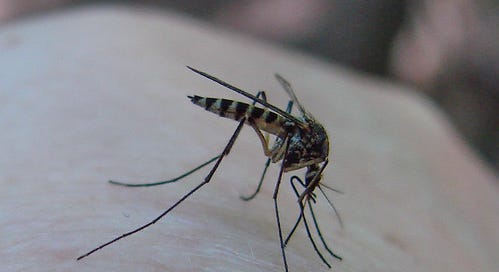



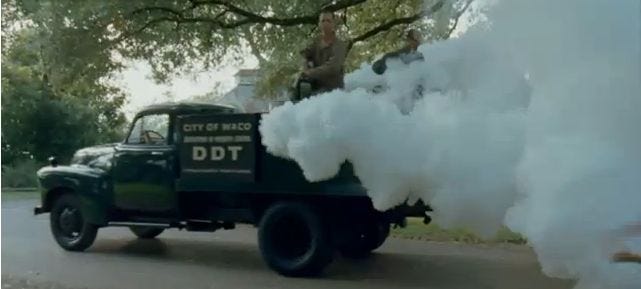
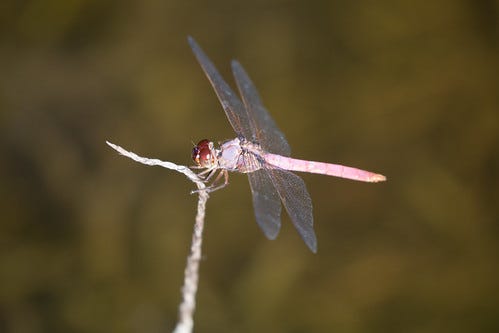


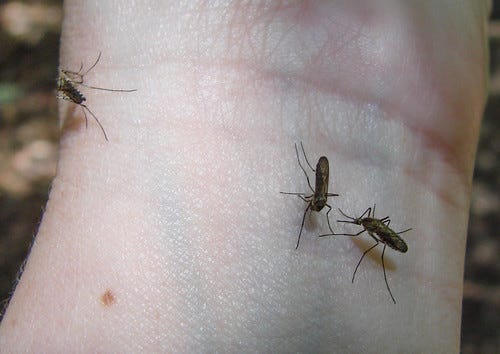

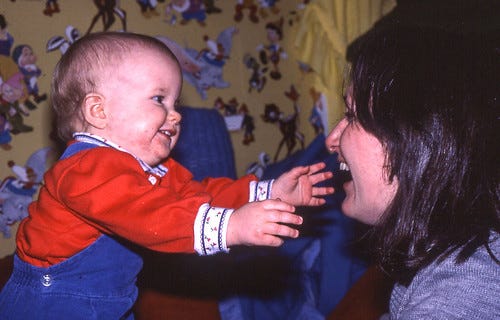
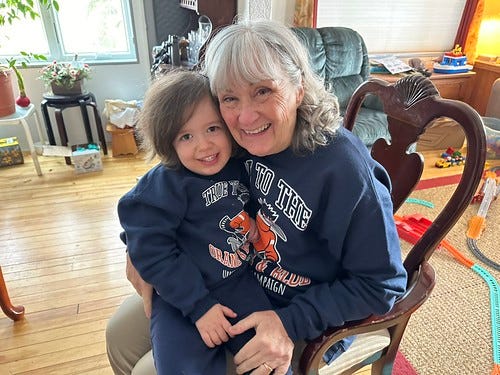
So well written and, on one level, discouraging, to think the malice and misinformation you so forcefully called out is ongoing. Thank you for this eye opener of a post.
We from thereabouts your to my generation (I'm sixty.) may have had the DDT metabolite, DDE, in our structure for a long time after the bann, as it has shown up in certain birds and perhaps other animals. Not sure. I'd have to do extensive research of the available literature. But, it takes DDE long to leave bodies and the ecosystem. And I do not know if all countries have banned DdT. Maybe unep.org, the United Nation's Environmental Program website, is a source of that. But pesticide companies spend 100 millions of dollars each advertising neonics, and stuff like granular lawn fertilizer, which birds often are known to pick up and ingest thinking they are food or grit with deleterious results definitely, and if I remember correctly, sometimes death. An agonizing one. This ignorance is hard to fathom given a little ground leaf littler on your lawn, or leaving the leaves, is a lot better for the lawn, which eventually grows up beyond the litter tall and naturally. Thank you for your devout conservation education and wisdom. Critical thinking these days is an endangered species, especially regarding the natural world. Perhaps we need to emulate the latter more in our thinking, as Janine Benyus put it in the title of her 1997 crucial book, Biomimicry. Well written, it compares to Lester Brown and Paul Ehrlich books at the time, but maybe indeed because she was female, perhaps didn't get the attention it so richly deserved. I highly recommend it to all nature students and conservationists. Sorry to be so long again.